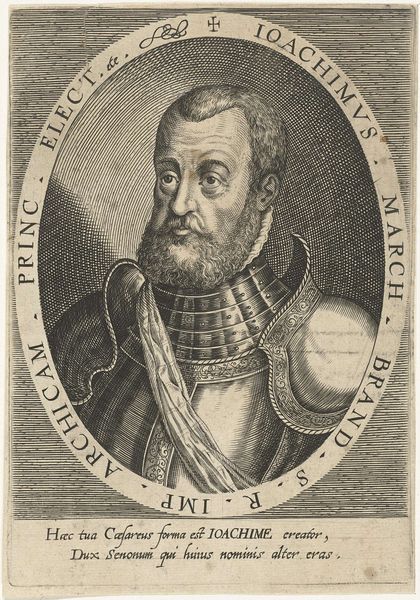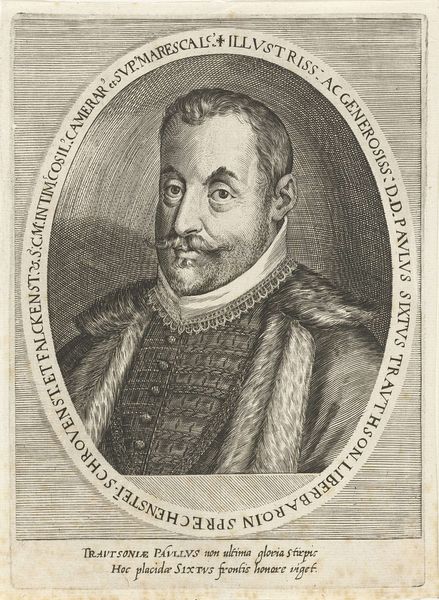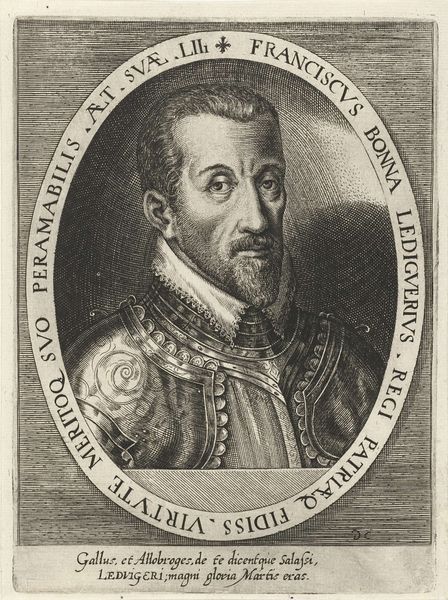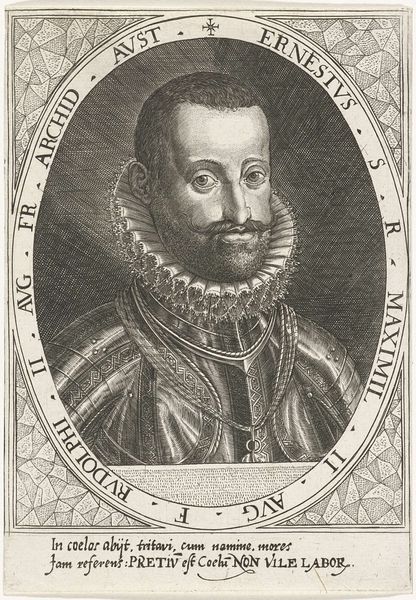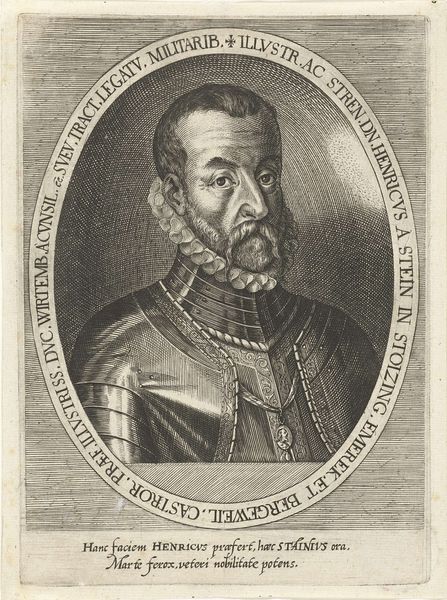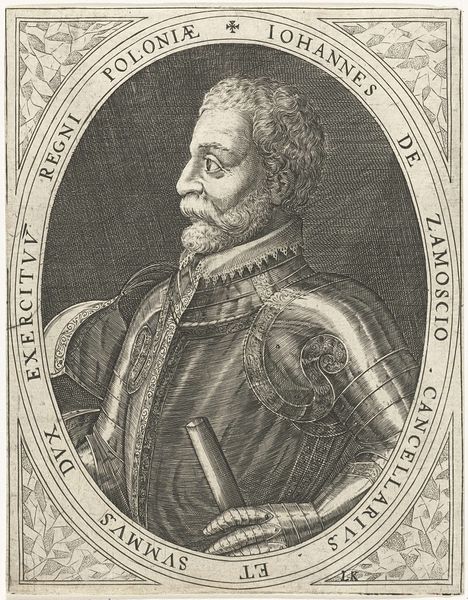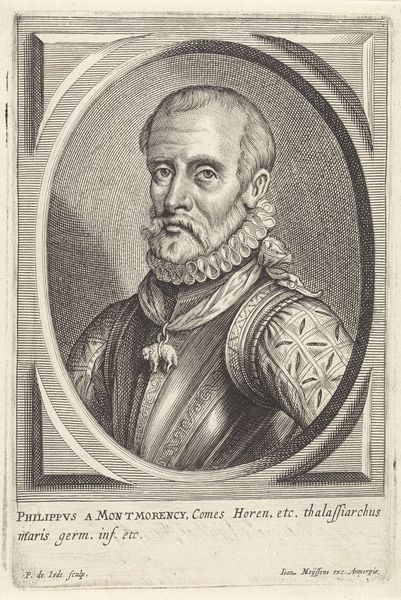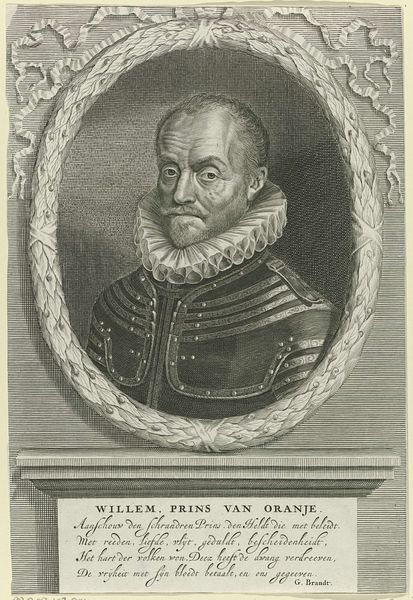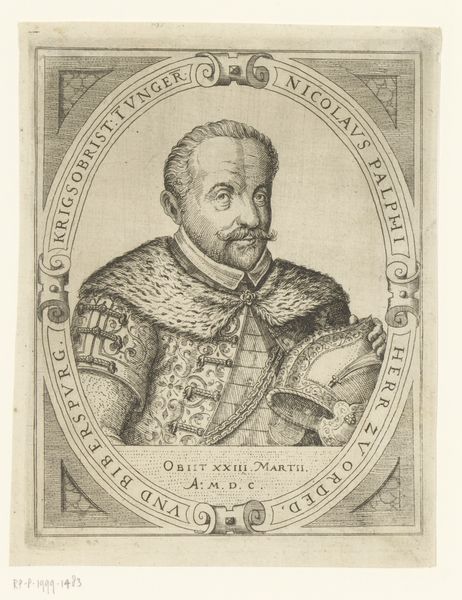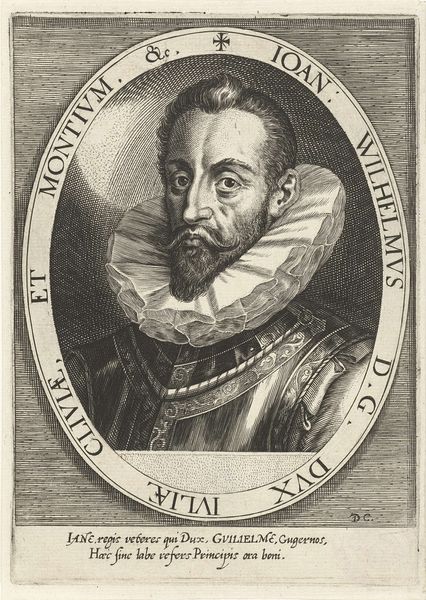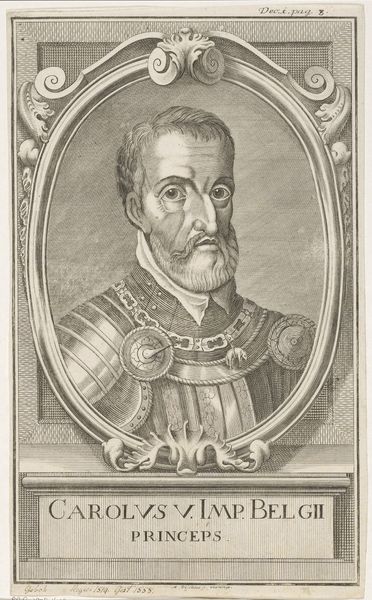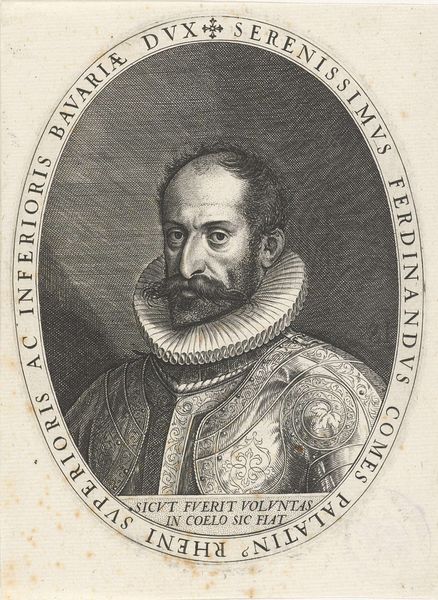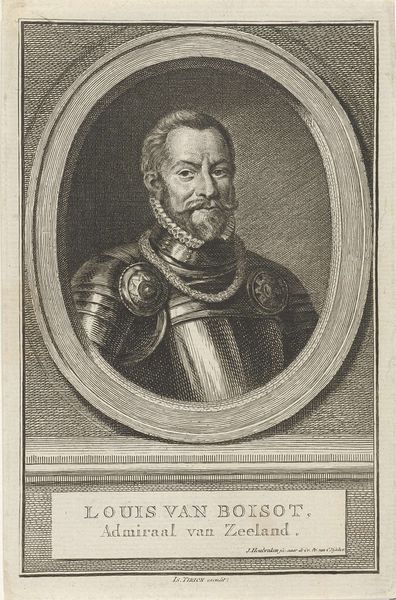
print, metal, engraving
#
portrait
#
baroque
# print
#
metal
#
old engraving style
#
portrait reference
#
history-painting
#
engraving
#
columned text
Dimensions: height 145 mm, width 85 mm
Copyright: Rijks Museum: Open Domain
Editor: Here we have "Portrait of Emperor Charles V," a print, made of metal, sometime between 1651 and 1700, attributed to Jean François de Ruelles. There is a stoic mood, surrounded by emblems of royalty. What jumps out at you? Curator: The entire image pulses with declarations of power, doesn't it? The crown, the laurel wreath, the Habsburg eagle on his breast… These aren't just decorative elements; they’re concentrated symbols carefully designed to communicate a message of imperial might that stretches across generations. What do you make of "Plus Ultra" inscribed there? Editor: It is interesting; I see that "Plus Ultra" translates to "further beyond", like an ambition to expand. The columns surrounding it suggest an allusion to the Pillars of Hercules, but why erase the original "Non Plus Ultra," or "nothing further beyond"? Curator: Precisely! By removing the negative prefix "Non", Charles V redefined Spain’s destiny and embraced global exploration. The image transforms the historical figure of Charles into an archetype of ceaseless ambition. Note how his armor also adds to this… a visual vocabulary carefully built up over decades to create meaning, layer upon layer. The symbols are not timeless, they echo with memories and hopes, which resonate differently now than then. Do you find that these symbols still possess the same impact today? Editor: That's a great point. While some symbols like crowns retain a clear meaning, others, like the Habsburg eagle or even the "Plus Ultra" motto, might need historical context to fully appreciate their original intent and nuance. Without understanding that historical context, the symbols don't really spark those historical connections or meanings for us now. Curator: Indeed! Time has shifted their resonance. But their presence invites us to ponder the psychological and cultural impact such deliberate image-making had, and continues to have. Editor: Thank you; that was incredibly insightful! I see how studying the intended meanings of the symbols is only part of the equation.
Comments
No comments
Be the first to comment and join the conversation on the ultimate creative platform.
